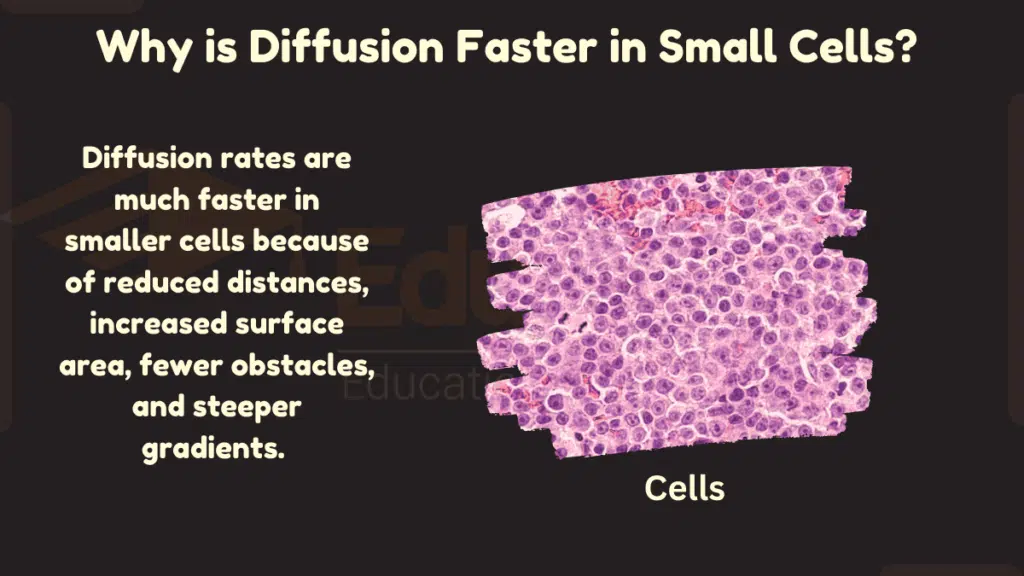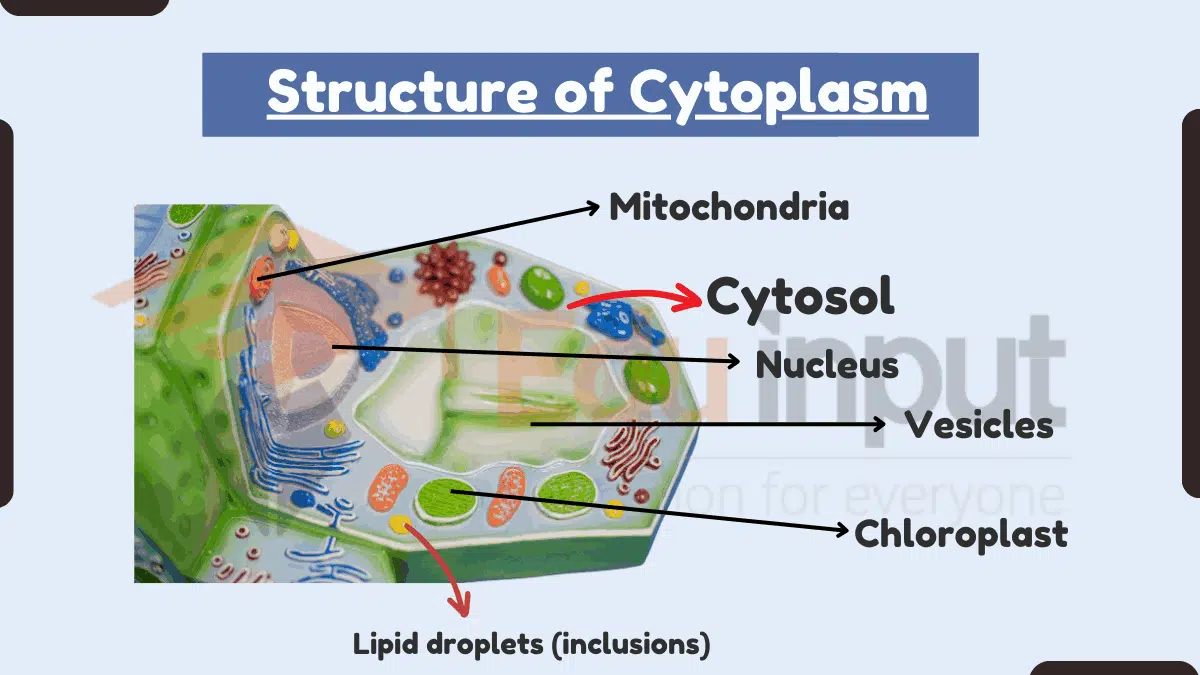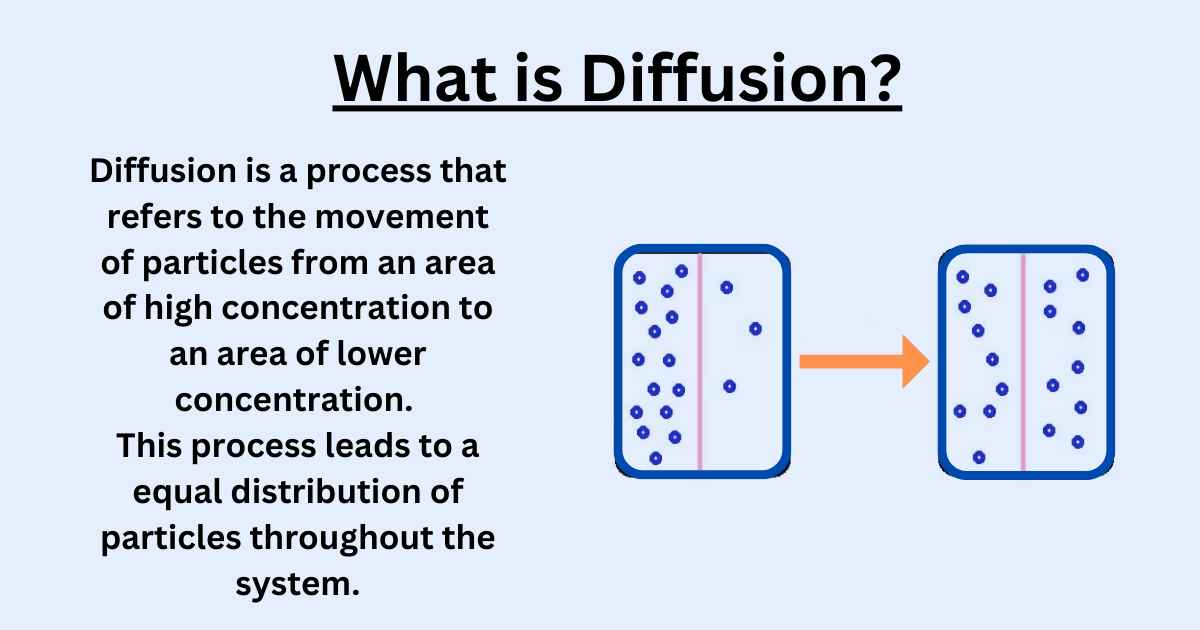Why is Diffusion Faster in Small Cells?
Diffusion rates are much faster in smaller cells because of reduced distances, increased surface area, fewer obstacles, and steeper gradients. This difference is due to how cell size affects the movement of particles across the cell.

Reasons Why is Diffusion Faster in Small Cells
Here are a few Why is Diffusion Faster in Small Cells:
1. Shorter Distances
Smaller cells provide shorter distances over which substances must diffuse from one side of the cell to the other. This allows particles to traverse the cell faster.
2. Increased Surface Area to Volume Ratio
Although small and large cells have equal surface area to volume ratios, small cells have more surface area per unit volume. This allows more particles to diffuse in and out across the membrane.
3. Fewer Obstacles
Small cells contain fewer organelles and intracellular structures, leaving more open space for particle diffusion. Large cells have more obstacles that can hinder diffusion.
4. Higher Concentration Gradients
Initial concentration gradients are steeper in small cells. Shorter distances between areas of high and low concentration result in faster diffusion.
Example
Oxygen diffuses from the alveoli into red blood cells within milliseconds because the small size enables rapid cross-cell diffusion.
Related Articles:
Why is Diffusion Faster in Hot Water?
Why is Diffusion Faster in Liquids than Solids?
Why is Diffusion Faster in Lungs?
Why is Diffusion Faster in Air Than Water?
Why is Diffusion Faster in Gases?
Why Is Diffusion Faster In Water Than in Agar?







Leave a Reply